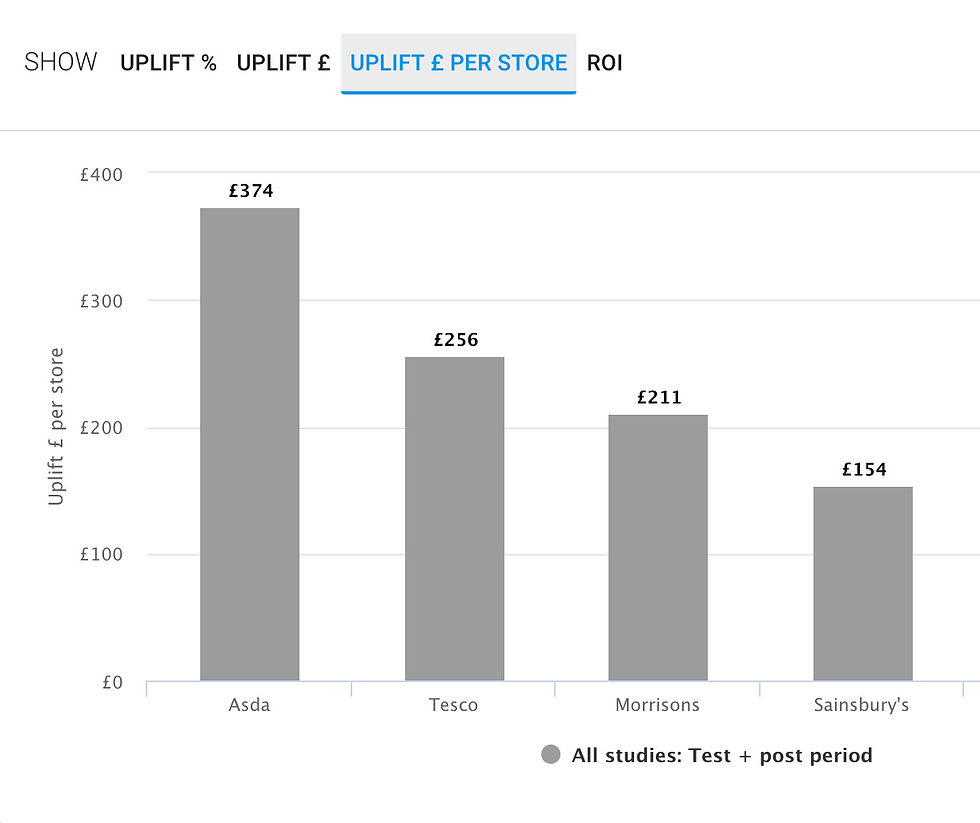Are you taking the Warren Buffet approach to shopper marketing, or playing the trade spend game?
- Joel Hopwood

- Oct 17, 2019
- 4 min read
Updated: Aug 31, 2023
Warren Buffet is the world’s most successful investor. His Berkshire Hathaway investment fund has delivered a mind-boggling annual 19% return over the last 53 years. How does he do it and what does this have to do with shopper marketing?
Buffet “invests for value”. Investments are not gambles on future market sentiment but rational decisions based on the careful study of information:
"The most important quality for an investor is temperament, not intellect. You need a temperament that neither derives great pleasure from being with the crowd or against the crowd."
FMCG brands need to decide whether their shopper marketing spend is invested for value, or whether it’s a sunk cost that will happen year-in year-out irrespective of a return. Here’s how to get started towards investing for value in your shopper marketing.
Rule #1 - it’s not spend, it’s investment
My favourite Buffet quote and the one that brings us back to marketing is this one: “price is what you pay, value is what you get”. All marketing “spend” should be considered as an investment and as a marketer, you should constantly be considering the relationship between price and value.
How do you value marketing activity - what, in other words, do you “get”? Simply put, all marketing activity can deliver either
an audience at a certain unit cost (usually delineated in “opportunities to see” the campaign)
it can activate purchase at the point of sale.
On occasion it can deliver a direct trial experience also
And that’s it.
Do you understand those metrics line by line for every investment you currently make? If not, you’re not investing, just spending. Detailed understanding such as this is standard practice for what used to be called ‘above the line’ media but is far less common in the world of shopper marketing, despite vastly better data being available.
Rule #2 - Investing in the customer is fraught with danger
One of the main barriers to investing for value in shopper marketing is that when we invest in shopper, we are almost always investing in the ‘customer’. I put that in inverted commas because actually supermarkets are not the real customer, the shopper is - the supermarkets are just the main route to get to her (and declining).
But the ‘customer’ mindset leads to poor decision-making - how many times have you sat in a meeting and heard “we knew that activity wouldn’t deliver much but Tesco wanted us to do it, so...”.
Don’t do favours. Don’t spend money on marketing activity of any kind without a rational expectation of return. Otherwise you’re not investing, you’re just spending.
There’s a positive spin to rule 2, though. Brands should leverage their shopper marketing spend against the tactics that are exclusively in the retailer’s control and which can disproportionately affect activation: extra display and secondary space.
Never commit marketing spend to a customer without attaching incremental display requirements to the investment. This is the single biggest thing you can do to increase the chance of a positive return.
Rule #3 - Beware the momentum of failure
“Because we did it last year” is not a reason to do it this year. Unilever have moved to a system of ‘zero-base’ budgeting where each marketing initiative has to be justified by a business case – ie. a rational plan of where the return is coming from.
There is no assumption that budgets will be maintained at same or similar levels next year as they were this year. Markets and categories change, the channels available for activation change - and your plans should change too. Moving to a zero-base model also increases the chance of optimisation, since it mitigates against repeating similar tactics used in previous years: if you’re building from scratch, you’re more likely to make rational choices.
Rule #4 - Measure everything, learn and improve

Shopper marketing is some of the most measurable marketing there is. There is a high volume of electronically collected (and therefore reliable) data, at both sales and customer level. There is limited fraud (unlike digital) so compliance, while poor, can actually be measured accurately.
Again, unlike digital, retailers have hundreds (sometimes thousands) of comparable physical stores, so extremely accurate A/B control group testing can be set up programmatically for even the most modest activity. Don’t get personally or collectively invested in a particular channel (“my boss hates trolley panels so we would never do them”) – trust the data and be ready to adopt and adapt, adeptly.
Summary
Do be rationally sceptical - about the effects of marketing, the role of creative, the reliability of retailers and their media contractors to put up point of sale material. Don’t spend any money without the rational expectation of a return for the brand and therefore the business.
Do remember that when you as a brand invest in the retailer, you become the client not the supplier. Don’t commit marketing funds without securing the best possible incremental display for your product.
Don’t listen to anecdotal evidence about what works and what doesn’t. Do trust independently collected data. Be bold.
If you do all these things, you will be investing for value and your shopper marketing department can become a Berkshire Hathaway. Good luck!


Comments